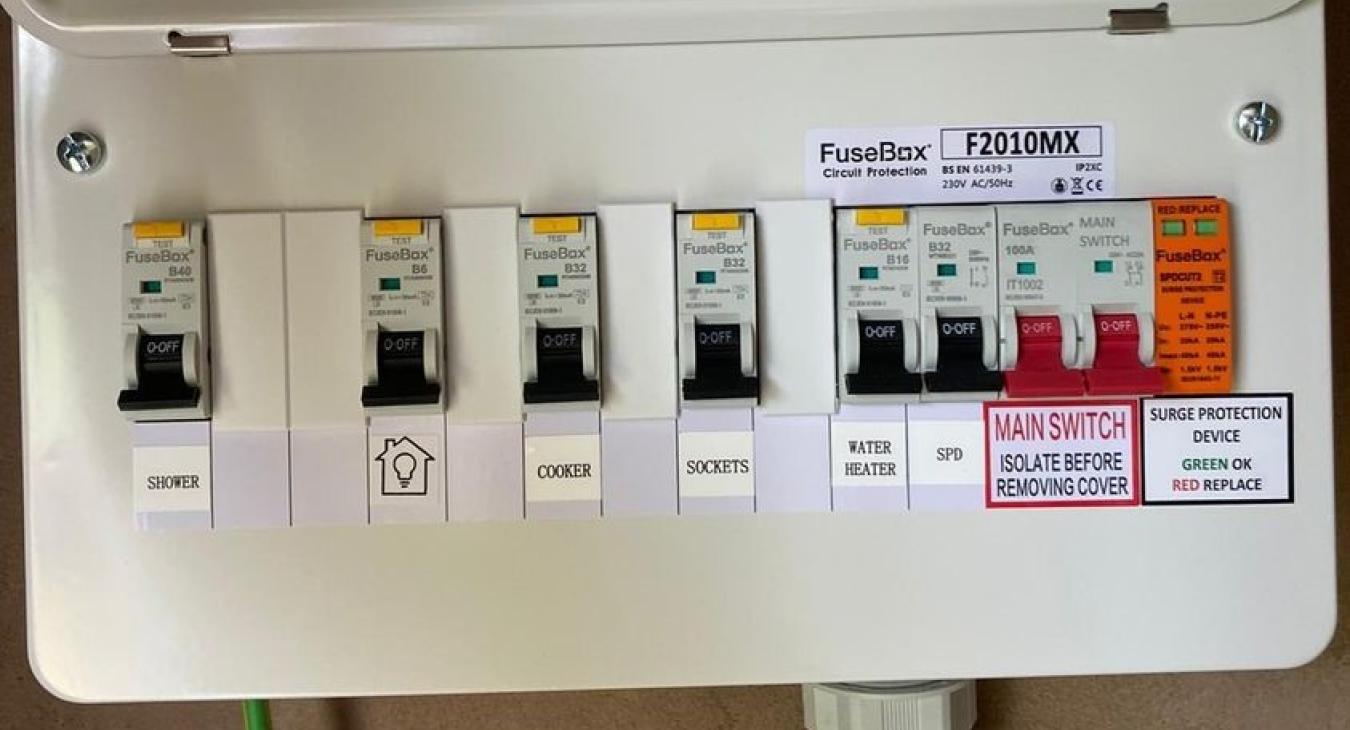
Parts of a Fuse Board by Electrical Experts, Coventry
If you have ever looked at the fuse board in your Coventry home, you will have seen that it is made of many different components. Each part of a fuse board plays a vital role in your electrical safety.
As experienced electricians, my team and I at Electrical Experts in Coventry are often asked to explain what the different parts of a fuse board do and why each one is necessary to fully protect you and your home. To help answer your questions, I have put together this short guide explaining all you need to know about the different parts of your fuse board.
What is a Fuse Board?
Your fuse board is the control centre of your Coventry property’s electrical system. A fuse board, or consumer unit as newer versions are known, distributes electricity to the various circuits in your property. If an electrical fault is detected, it cuts off the power to protect you and your home from the risks of electrical fire and shock. The different parts of a modern fuse board all have specific purposes, and each will protect you and your home from a particular kind of electrical hazard.
Fuse board or Consumer Unit?
As I have already mentioned, newer fuse boards are also known as consumer units and they are a little different to the older style fuse boards. Their primary function remains the same but the way they protect you, and the effectiveness of the way they do that, are quite distinct. The most important and easily recognisable differences between an older fuse board and a modern consumer unit is in how the power is cut during a fault. An older style fuse board has a set of removable fuses with a small wire inside which melts to cut the power. Whilst they can still protect you from some electrical risks, they are nowhere near as effective as consumer unit style fuse board and are much slower to react. They do not feature any of the additional protections that you find on a modern fuse board/consumer unit and, most importantly, do not meet current safety standards. If your fuse board is of an older style, you should arrange for a local electrician to perform a fuse board upgrade to keep you safe.
Now, lets look more closely at the parts of a newer fuse board/consumer unit:
Main Switch
If you only know one thing about the fuse board in your Coventry home, it should be where to find the main switch. Should you ever need to switch of the power in an emergency, such as a flood, it is the main switch that you would use. Your main switch quite simply controls the flow of mains power into your home. It will be clearly marked and easy to spot on your fuse board panel.
MCBs
MCB is shorthand for Miniature Circuit Breaker. They are the row of small switches you see on your fuse board, and they protect your electrical circuits from damage caused by overcurrent. Common overcurrent events that cause an MCB to trip include power surges, overload caused using extension cords, and loose live wires in a circuit. Each MCB will be assigned to protect an individual circuit on your fuse board. If an issue is detected on that circuit, the MCB will switch off power instantaneously. To restore power, you just simply toggle the switch back to the on position.
RCDs
RCDs are quite simply lifesaving devices. RCD stands for Residual Current Device and are one of the most important parts of the fuse board in your Coventry home. Incoming electrical supply passes through your RCD which feeds that supply to the MCBs. Whilst an MCB reacts to excessive current and is designed to protect your circuits, an RCD primarily protects people. They prevent electric shocks by cutting the power within milliseconds of detecting an imbalance. I cannot stress how important RCD protection is for your safety. If your current fuse board does not include RCDs, call in your electrician as soon as possible.
RCBO
Some fuse boards will have RCBOs (Residual Current Breaker with Overcurrent) which combine the functions of an MCB and an RCD in place of separate MCBs and RCDs. RCBO’s provide the same high levels of protection as the individual parts, just in a combined unit.
SPD
A Surge Protection Device (SPD) protects your electrical equipment against high voltage power surges which are most commonly caused by lightning strikes. The excess current this introduces can damage your electrical equipment – often beyond repair. The average Coventry home now includes a significant amount of electronics and the cost to replace all of them would be eye wateringly high. Adding an SPD will protect you against this potential financial hit – not to mention the upset if a device containing precious photos is damaged. SPDs are a recent development and were not previously fitted as standard. As such, your fuse board may not have one. If you would like to add SPD protection, your local electrician will be happy to help.
I hope this guide has helped to answer some of your questions about the parts of your fuse board and how they work together to protect your home. If you have any further questions, my team and I at Electrical Experts will be happy to help. Based in Coventry, we are fully qualified, highly experienced and NICEIC registered professionals. Whether you would like an electrical inspection, a new fuse board installation, or to add an SPD, we are on hand to help. Contact us today.
